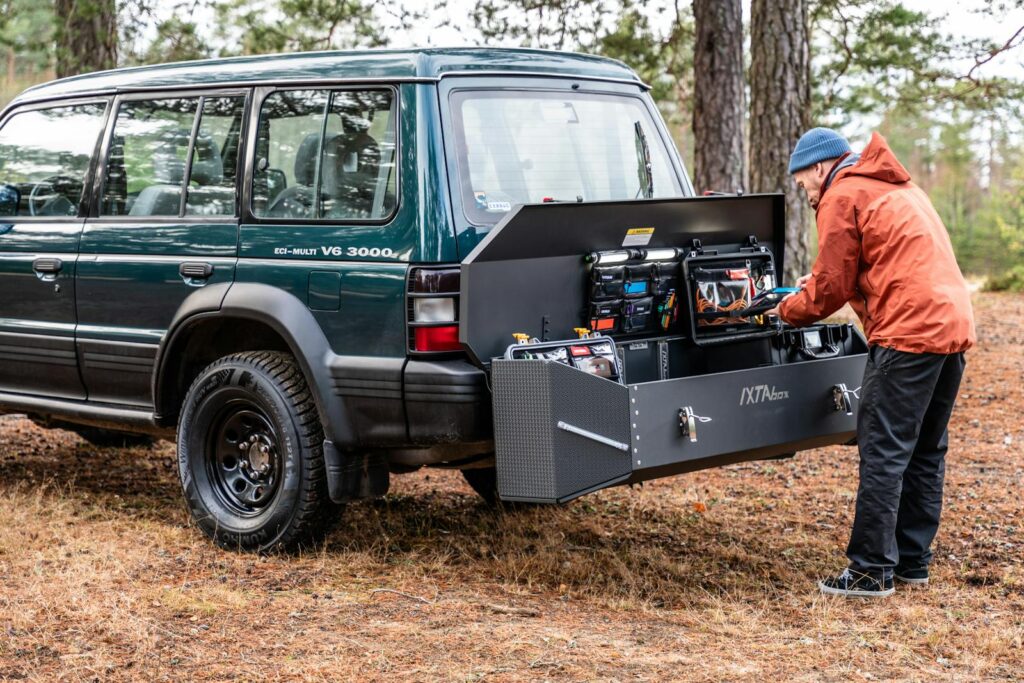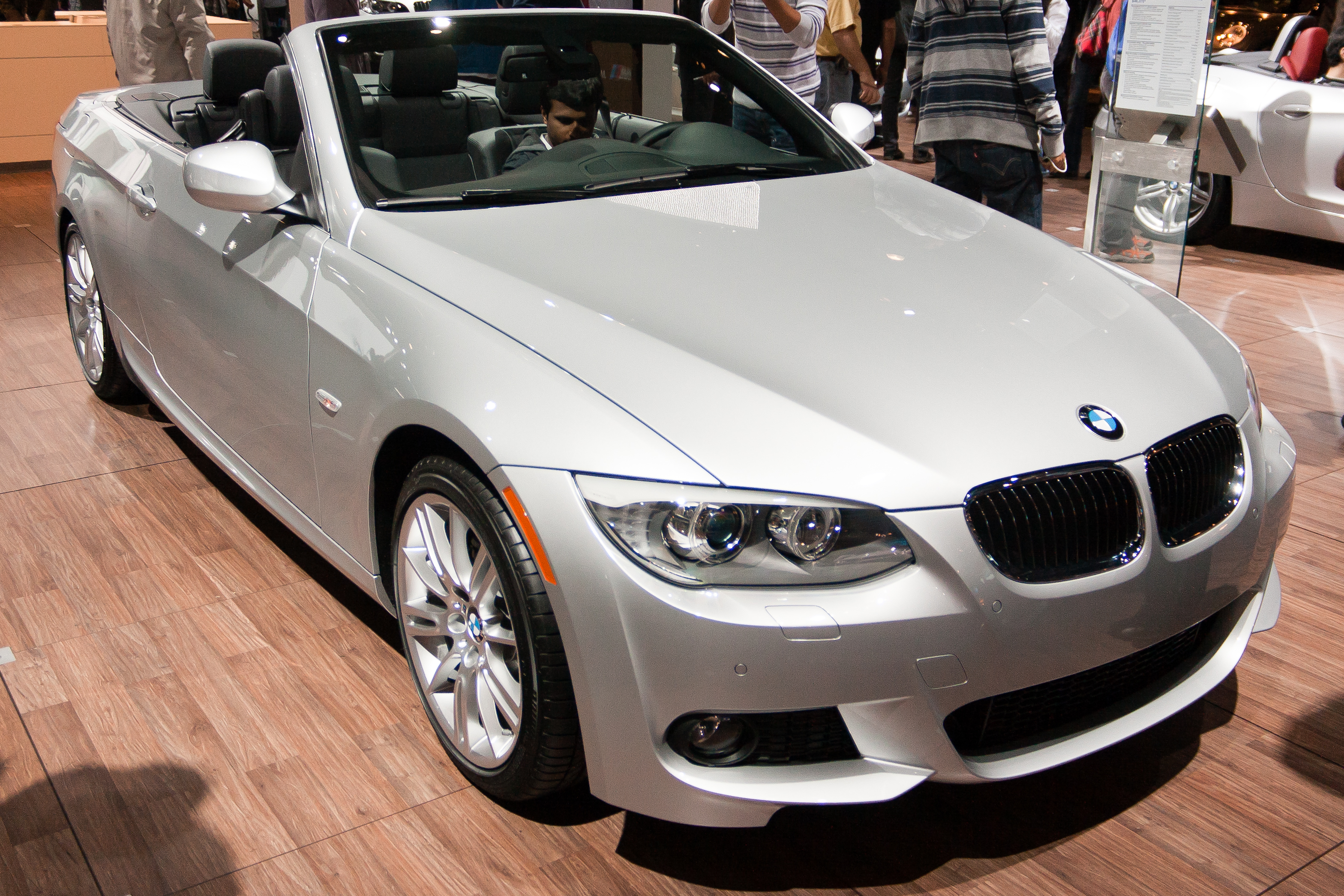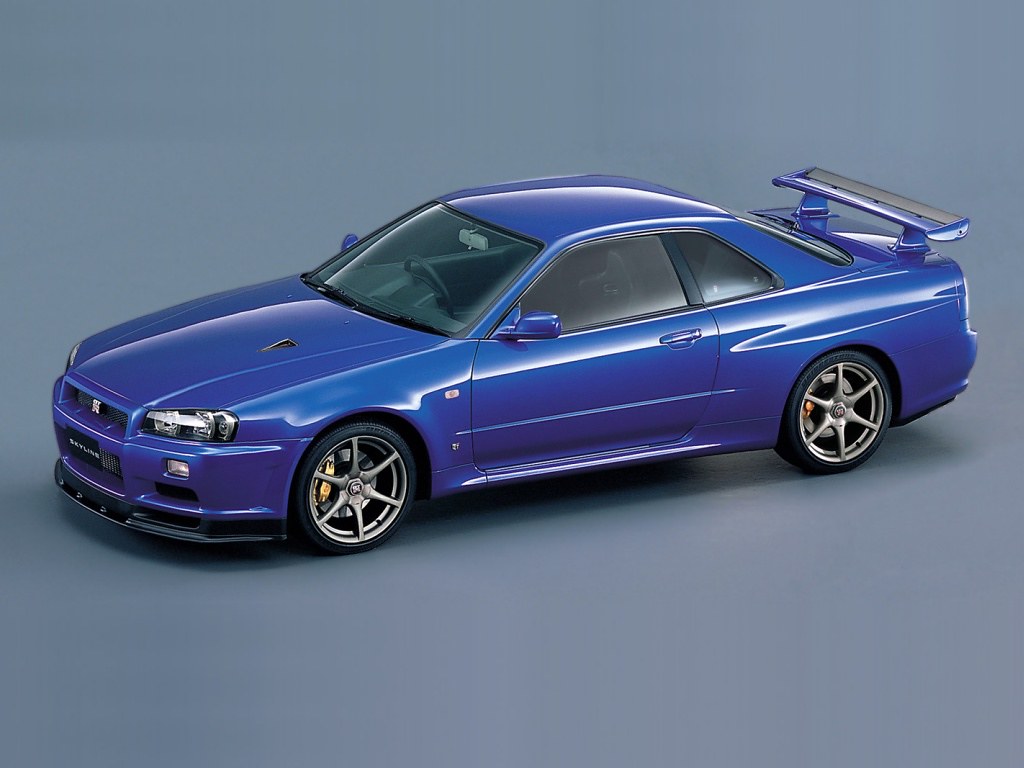
Cars used to have real weight you could feel in your hands, dashboards made of actual steel, and character that today’s cookie-cutter crossovers can’t touch. The 1970s delivered sedans that were more than just transportation—they were rolling statements that responded to changing times with surprising ingenuity and style.
While Mustangs and Camaros steal every car show spotlight, these everyday heroes deserve recognition for revealing more about automotive evolution than any muscle car ever could. These forgotten four-doors packed serious engineering, luxury touches, and sometimes unexpected performance into practical packages that even families could use.
In an era often defined by fuel crises and shifting priorities, these sedans offered unique solutions, combining practicality with flashes of brilliance. They were cherished by a generation that valued solid construction and distinctive identity, yet they largely go unnoticed by younger enthusiasts today. Join us as we explore nine of these truly obscure sedans that captured the hearts of boomers, but remain puzzling relics to modern drivers.
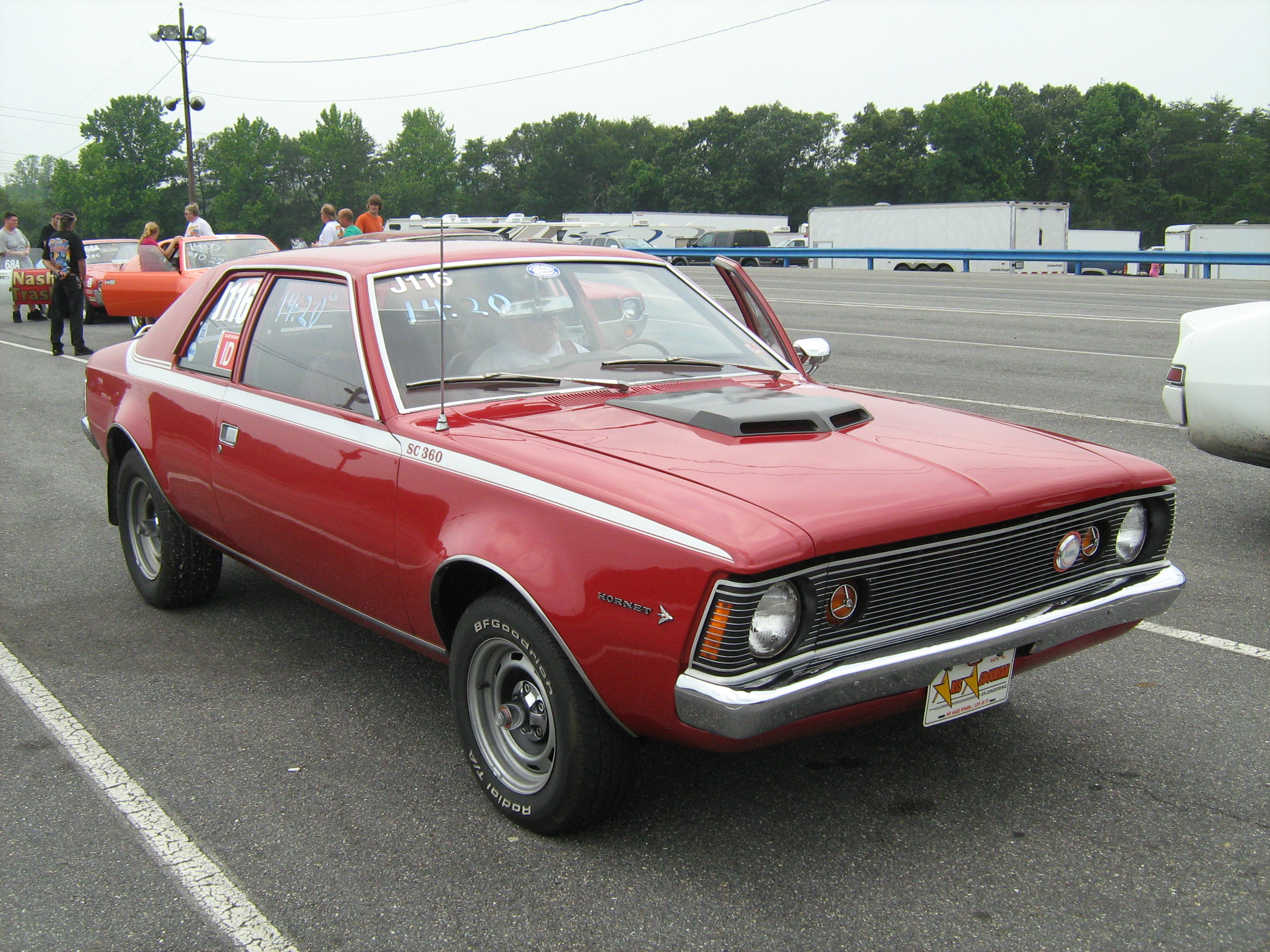
1. **1971 AMC Hornet SC/360 Sedan**AMC’s middle finger to the muscle car establishment arrived disguised as a family sedan. The SC/360 delivered serious punch where you least expected it—a 360 AMC V8 hiding beneath your neighbor’s grocery getter appearance. Racing stripes ran down the sides like war paint, announcing this wasn’t your typical family hauler. Its exterior wore sharp angles and a purposeful stance, proudly displaying AMC’s signature grille with authority, while subtle fender flares hinted at the underlying performance lurking beneath.
Step inside, and you’d find bucket seats that meant business, not the bench seat compromises most family cars offered. The instrument cluster delivered real gauges instead of idiot lights, giving drivers crucial information about what their 245 horsepower was doing. Factory suspension upgrades lurked beneath, transforming corners from afterthoughts into enjoyable driving experiences.
Motor Trend famously called it “just a plain gas to drive” with handling that felt like a dream—high praise when most American cars treated steering as a suggestion. Only 784 rolled off the line in 1971, making spotting one today like finding an original Star Wars figure still in its package. This rarity, combined with its unexpected performance in a family sedan body, cemented its unique place in automotive history, cherished by those who appreciated its audacious spirit.
Read more about: Unearthing Hidden Gems: 14 Overlooked Muscle Cars That Offer Serious Performance Without Breaking the Bank for Savvy Collectors

2. **1976 Chevrolet Concours Sedan**Chevy had yet to convince anyone the Malibu was premium when the Concours transformed Nova bones into something with serious aspirations. The exterior wore subtle chrome accents and refined styling cues that suggested this compact had somewhere important to be, not just errands to run. Proportions hit the sweet spot between economy and elegance, with a formal roofline that added visual weight without bulk.
Inside, upgraded fabric and woodgrain trim elevated the cabin above typical Nova territory. Sound dampening made the Concours noticeably quieter than its platform sibling, and high-back seats provided comfort worthy of the premium positioning. This careful attention to detail set it apart from its more utilitarian brethren, offering a taste of luxury in a more manageable size.
Standard equipment included the reliable 250 inline-six, though buyers seeking more excitement could upgrade to V8 power reaching 350 cubic inches. Chevrolet produced the Concours for just two years—1976 to 1977—before folding it back into the Nova lineup, creating the automotive equivalent of a limited Netflix series that got canceled before finding its audience. Its brief run and premium touches represented Chevrolet’s early experiment with near-luxury compact sedans.
Car Model Information: 2020 Lexus RX 350 Base
Name: Chevrolet Chevelle
Caption: 1970 Chevrolet Chevelle SS 396 Sport Coupe
Manufacturer: Chevrolet
Production: 1963–1977
ModelYears: 1964–1977
Class: Mid-size
Platform: GM A platform (RWD)
Layout: FR layout
Successor: Chevrolet Malibu
Categories: 1970s cars, All articles needing additional references, All articles that may contain original research, All articles with specifically marked weasel-worded phrases, All articles with unsourced statements
Summary: The Chevrolet Chevelle is a mid-sized automobile that was produced by the Chevrolet division of General Motors (GM) in three generations for the 1964 to 1977 model years. Part of the GM A-body platform, the Chevelle was one of Chevrolet’s most successful nameplates. Body styles included coupes, sedans, convertibles, and station wagons. The “Super Sport” versions were produced through the 1973 model year and Lagunas from 1973 through to 1976.
After a four-year absence, the El Camino was reintroduced as part of the new Chevelle lineup in 1964.
From 1964 to 1969, GM of Canada sold a modified version of the Chevelle that included a Pontiac-style grille, and a LeMans instrument panel, marketed as the Beaumont.
The Malibu was the top-of-the-line model to 1972, and completely replaced the Chevelle nameplate starting with the redesigned, and downsized 1978 model year.
Get more information about: Chevrolet Chevelle
Buying a high-performing used car >>>
Brand: Chevrolet Model: Concours Sedan
Price: $30,981 Mileage: 81,179 mi.
Read more about: From Showroom Shame to Collector’s Dream: The Flops That Became Automotive Icons

3. **1975 Dodge Monaco Brougham Sedan**Peak ’70s excess rolled on four wheels wearing enough chrome to blind oncoming traffic. The Monaco Brougham embodied Detroit’s “bigger is better” philosophy while the rest of the world embraced “less is more”. This was an oversized and unforgettable land yacht with a size that commanded respect through sheer presence. Formal styling with vinyl roof treatment screamed luxury louder than any modern vehicle dares, with chrome bumpers stretching across the full width and side trim adding visual weight to an already substantial profile.
Velour seats so plush you’d sink like quicksand welcomed passengers into a world where comfort meant excess. The dashboard displayed more fake wood than furniture stores, creating an atmosphere of luxury that defined the era’s priorities. These comfort-driven details—velour seats, chrome trim, and bold dashboards—were hallmarks of their time, distinguishing them from the vehicles of today.
Standard 360 V8 power could be upgraded to 400 or even the mighty 440, while optional power windows, locks, and seats meant minimal physical effort was required. These boats required concentration just to keep between lane lines, but they announced arrival like nothing else on the road, truly representing American luxury when stretching tape measures mattered more than technology specs—a time capsule to when bigger truly meant better in Detroit’s playbook.
Car Model Information: 2020 Lexus RX 350 Base
Name: Dodge Monaco
Caption: 1968 Dodge Monaco four-door hardtop
Manufacturer: Dodge
Related: Dodge Polara
ModelYears: 1965–1977 (full-size),1977–1978 (intermediate) , 1990–1992 (full-size)
Predecessor: Dodge Custom 880
Successor: Dodge St. Regis
Categories: 1970s cars, 1990s cars, All articles needing additional references, All articles that may contain original research, All articles with unsourced statements
Summary: The Dodge Monaco is an automobile that was marketed by the Dodge division of Chrysler Corporation. Introduced as the flagship of the Dodge product line, the Monaco was introduced for the 1965 model year to replace the Custom 880, then later joined as a sub-model of the Dodge Polara. During its production, the Monaco was offered in several body configurations, including two-door and four-door hardtop sedans, four-door sedans, two-door convertibles, and station wagons.
From 1965 to 1977, three generations of the Monaco were produced with the full-size Chrysler C platform. For 1977 and 1978, Dodge shifted the Monaco to the intermediate Chrysler B platform, effectively downsizing the model line. For 1979, the model line was redesigned and renamed the Dodge St. Regis.
After a 12-year hiatus, the full-size Monaco was revived for the 1990 model year as the flagship Dodge sedan, replacing the Diplomat. This was a rebadged version of the Eagle Premier which was developed by Renault and American Motors Corporation (AMC). The Monaco was replaced by the Dodge Intrepid for the 1993 model year.
It is named after the Principality of Monaco.
Get more information about: Dodge Monaco
Buying a high-performing used car >>>
Brand: Dodge Model: Monaco Brougham
Price: $30,981 Mileage: 81,179 mi.
Read more about: Power and Pursuit: Exploring 12 Iconic Chrysler, Plymouth, and Dodge Police Cars That Defined Law Enforcement

4. **1975 Mercury Comet Sedan**The Comet lived in the Maverick’s shadow despite offering superior refinement and standard features. Mercury’s compact sedan represented an attempt to deliver near-luxury appointments in a smaller package, a response to oil crises that forced Americans to reconsider automotive priorities. Sleek proportions and Mercury’s signature grille treatment distinguished the Comet from its Ford cousin, striking a thoughtful balance between economy and elegance, offering buyers a more sophisticated choice in the compact segment without venturing into full-size territory.
High-back bucket seats and woodgrain touches created an interior environment more refined than the Maverick’s basic approach. Additional sound dampening provided a quieter cabin experience, with luxury-oriented details elevating the driving environment. This focus on interior comfort and a subdued elegance aimed to capture a market segment desiring more than just basic transportation from their compact cars.
Available with either the economical 200 inline-six or the optional 302 V8, the Comet struck a middle ground between efficiency and performance that seems commonplace now but felt relatively novel in the early ’70s. The combination represented automotive history’s middle child—overshadowed despite having plenty to offer, making it a compelling, if often overlooked, piece of its era’s automotive landscape.
Car Model Information: 1964 Mercury Comet Sedan
Name: Mercury Comet
Aka: Comet
Caption: 1964 Mercury Comet Caliente coupé
Manufacturer: Mercury (automobile)
Production: 1960–1961 (“Comet”), 1962–1977 (“Mercury Comet”)
Assembly: Oakville, Ontario,Canada,Claycomo, Missouri,United States,Lorain, Ohio,United States,Milpitas, California,United States,Wayne, Michigan,United States
Class: Compact car
Related: Ford Fairlane (Americas),Ford Falcon (North America),Ford Maverick (North America),Ford Torino,Mercury Montego
Layout: FR layout
Successor: Mercury Zephyr,Mercury Monarch
Categories: 1960s cars, 1970s cars, All articles with unsourced statements, Articles with short description, Articles with unsourced statements from August 2019
Summary: The Mercury Comet is an automobile that was produced by Mercury from 1962–1969 and 1971–1977 — variously as either a compact or an intermediate car. For 1960 and 1961, Comet was its own brand sold by Lincoln-Mercury “Comet”.
The compact Comet shared a naming convention associated with the ongoing Space Race of the early 1960s with the Mercury Meteor, which was introduced as the base-trim full-size Mercury sedan.
The Comet was initially based on the compact Ford Falcon, then on the intermediate Ford Fairlane, and finally on the compact Ford Maverick. Early Comets received better-grade interior trim than concurrent Falcons, and a slightly longer wheelbase.
Get more information about: Mercury Comet
Buying a high-performing used car >>>
Brand: Mercury Model: Comet
Price: $9,993 Mileage: 44,274 mi.
Read more about: The Rise and Fall: A Comprehensive Look at Why Ford Ended the Mercury Brand After 70+ Years

5. **1977 Pontiac Phoenix Sedan**Pontiac’s take on GM’s X-body platform wore the brand’s signature split-grille design with compact confidence. Introduced in 1977, the Phoenix offered distinctive styling in a package designed to compete with Japanese imports flooding the market. Gold and earth tones dominated period color choices, and clean lines suggested efficiency without sacrificing Pontiac character, marking it as a unique entry in the compact market.
Interior appointments reflected Pontiac’s attempt to court younger buyers with sophisticated compact offerings. The LJ luxury trim, for instance, added comfort touches including deluxe seat belts and upgraded interior materials, aiming to provide a more upscale experience within its compact dimensions. This focus on internal refinements showed a clear effort to blend practicality with an appealing aesthetic.
Power came from an underwhelming 110-horsepower V6 to a more spirited 155-horsepower 305 V8 that transformed basic transportation into something approaching enjoyable. The Phoenix struggled during the disco era, caught between buyers wanting true economy cars and those craving traditional American luxury—creating a vehicle that pleased neither camp completely. Discovering a Phoenix today resembles uncovering original Star Wars action figures still in packaging—theoretically possible but increasingly unlikely as time removes survivors from roads and driveways, making its survival a rare find for enthusiasts.
Continuing our journey through the unsung heroes of 1970s American automotive engineering, we now turn our attention to four more distinctive sedans that, despite their unique qualities and boomer appeal, have largely faded from the collective memory of modern drivers. These vehicles offer a fascinating look into a bygone era of design, luxury, and unexpected challenges that shaped their destiny and cemented their status as true relics of the past. Let’s delve into the final entries on our list, uncovering the stories and specific details that make them so intriguing.
Car Model Information: 1977 Pontiac Phoenix
Name: Pontiac Phoenix
Manufacturer: Pontiac (automobile)
ModelYears: 1977–1984
Class: Compact car
Predecessor: Pontiac Ventura
Successor: Pontiac Grand Am
Categories: 1980s cars, All articles needing additional references, Articles needing additional references from February 2017, Articles with short description, Cars discontinued in 1984
Summary: The Pontiac Phoenix was a compact car that was sold from 1977 to 1984 by Pontiac. There were two generations of the Phoenix, both based on popular Chevrolet models, and both using the GM X platform designation. It was named for the mythological Phoenix, which would die in a self-inflicted fire and be reborn from the ashes. The Phoenix was replaced by the Grand Am in 1985.
Get more information about: Pontiac Phoenix
Buying a high-performing used car >>>
Brand: Pontiac Model: Phoenix
Price: $14,693 Mileage: 0 mi.
Read more about: From Showroom Shame to Collector’s Dream: The Flops That Became Automotive Icons
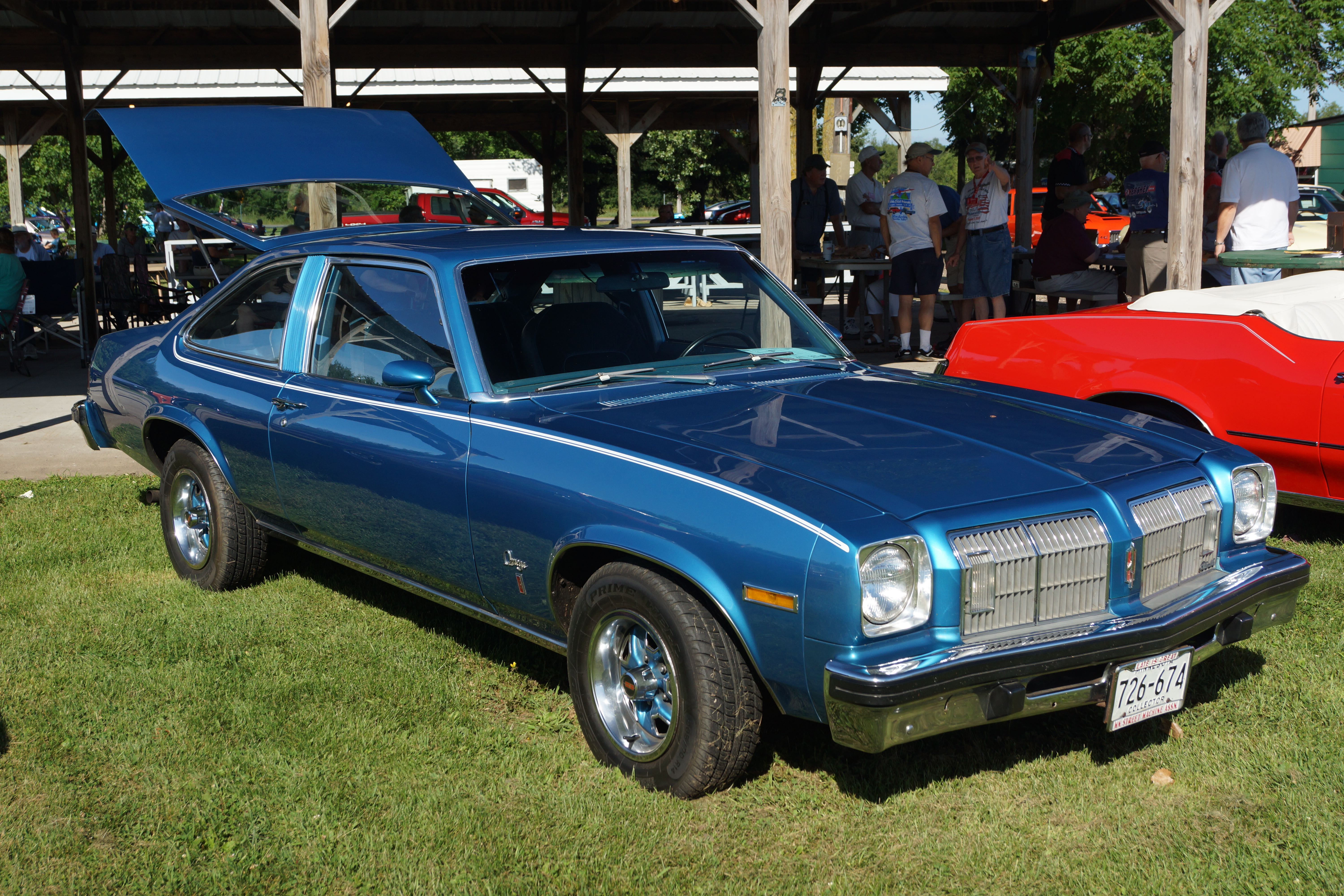
6. **1975 Oldsmobile Omega Sedan**Oldsmobile’s venture into the compact luxury segment with the Omega represented a conscious effort to attract a younger demographic, blending traditional Oldsmobile refinement with a more manageable footprint. The Omega proudly showcased styling cues that upheld the Oldsmobile badge’s reputation for refined engineering, featuring crisp geometry and formal lines that suggested enduring brand values in a smaller, more accessible package. This was Oldsmobile’s sophisticated answer to the demand for efficient yet upscale compacts.
While the Omega shared its X-body architecture with siblings like the Pontiac Phoenix, it carved out its own identity through distinct styling and a commitment to detail that aimed to transcend its platform-mate status. It was an ambitious move, intending to bring Oldsmobile’s characteristic comfort and perceived quality to a segment often dominated by more utilitarian offerings, promising a touch of class without the full-size commitment.
However, this admirable ambition faced a formidable adversary: rust. The Omega, like many vehicles of its time, proved particularly susceptible to the ravages of road salt and environmental exposure. This susceptibility meant that countless examples succumbed to corrosion long before their mechanical lives were over, turning many once-proud Omegas into iron oxide well before the 1980s. It was a harsh, undeniable lesson in material science that significantly hampered the car’s longevity and prevalence.
Step inside the 1975 Oldsmobile Omega, and you would find an interior that truly elevated the compact experience above that of its Chevrolet Nova platform-mate. Plush cut-pile carpeting underfoot and simulated wood grain trim adorning the dashboard created an atmosphere of understated luxury, reflecting Oldsmobile’s unwavering commitment to detail. Buyers seeking adequate performance alongside this luxury could opt for the 260 V8, a highly desirable choice that offered a balanced driving experience.
Ultimately, one of the Omega’s most enduring legacies, albeit an unintentional one, was its role in teaching car buyers the critical importance of inspecting for rust before making a purchase. This valuable lesson, learned the hard way by many owners, undoubtedly saved countless wallets in subsequent used car transactions. Despite its premature decline due to rust, the Omega stands as a testament to Oldsmobile’s dedication to infusing luxury, even into its compact offerings, leaving a distinctive mark on automotive history.
Read more about: From Quirky to Coveted: 14 Ugly American Cars That Are Now Seriously Cool Collector’s Items
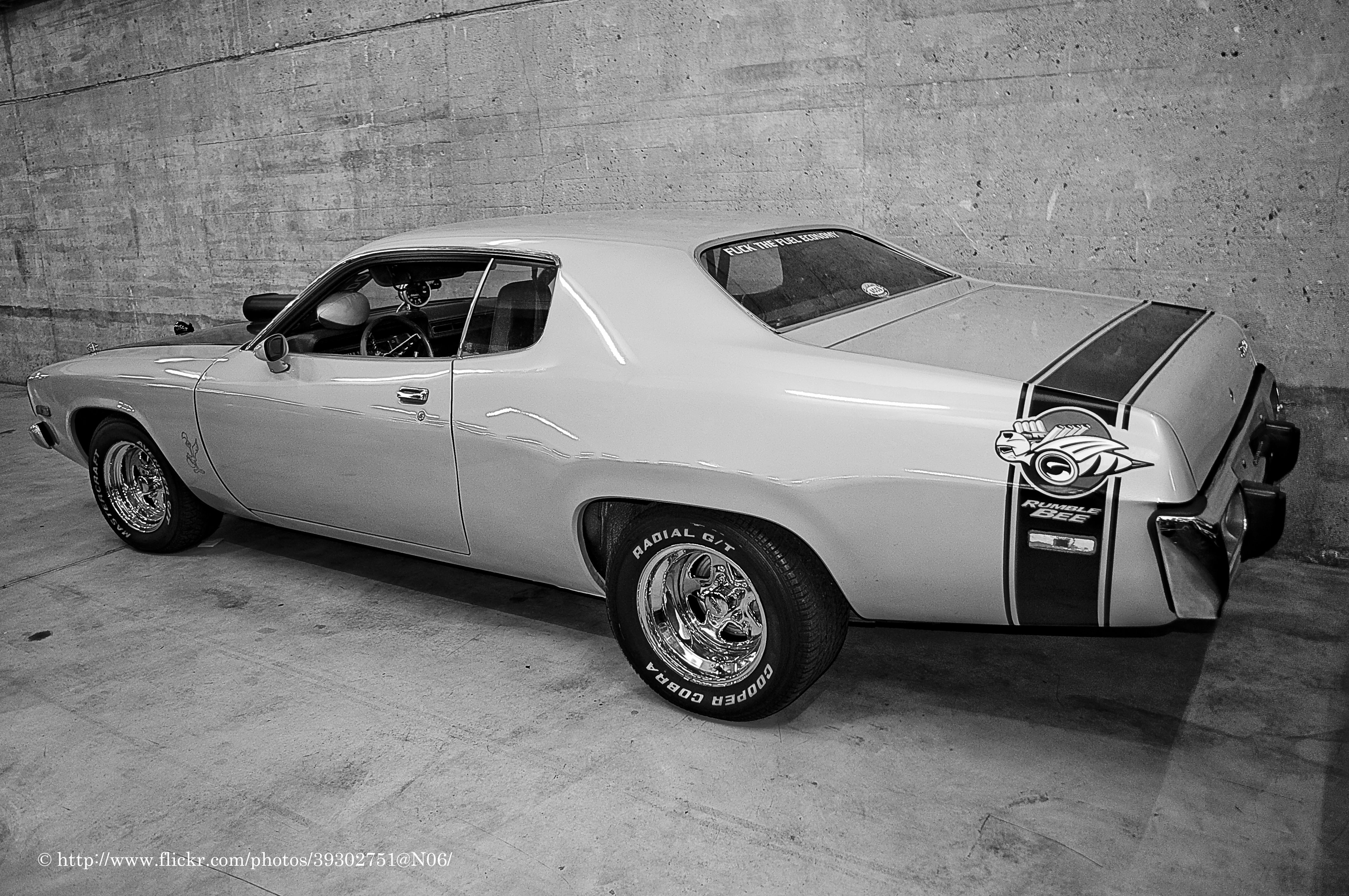
7. **1973 Plymouth Satellite Sedan**Before the iconic Road Runner completely monopolized the attention of performance enthusiasts, the Plymouth Satellite Sedan stood as a remarkably balanced offering, expertly blending family practicality with a surprising undercurrent of muscle car potential. Its third-generation styling, which ran from 1971 to 1974, epitomized the distinctive “fuselage” design language that characterized many Chrysler products during that transformative period in American automotive design.
The Satellite’s flowing bodywork and thoughtfully balanced styling have, against all odds, aged remarkably well when compared to many of its contemporaries. This enduring aesthetic quality has quietly propelled the Satellite into the realm of a true sleeper in today’s discerning collector market. It skillfully avoided the excessive chrome and visual bulk that often defined other period vehicles, cultivating an understated yet distinctive appeal that continues to resonate even as automotive trends shift and evolve.
Under the hood, the 1973 Satellite offered a robust array of power plants, catering to a wide spectrum of buyer preferences. Options ranged from the famously bulletproof 225 “Slant Six” engine, renowned for its reliability and efficiency, to more powerful and robust 318 and 360 V8s. While emissions regulations of the mid-1970s did impose some power reductions compared to their roaring 1960s predecessors, these engines still delivered a respectable level of performance, making the Satellite a capable and enjoyable drive for its era.
Today, the quest to uncover an original Satellite that has managed to escape conversion into a coveted Road Runner clone is an increasingly challenging endeavor. It’s akin to finding a pristine, original iPhone with a fully functioning battery—theoretically possible, but incredibly rare. Inside, the Satellite was designed with practical comfort in mind, featuring interior materials that deliberately prioritized durability over overt luxury, a clear reflection of Plymouth’s steadfast focus on delivering exceptional value to its pragmatic, value-conscious buyers.
Car Model Information: 2020 Lexus RX 350 Base
Name: Plymouth Satellite
Manufacturer: Plymouth (automobile)
Production: 1964–1974
ModelYears: 1965–1974
Caption: 1966 Plymouth Satellite 2-door hardtop
Layout: FR layout
Class: Mid-size car
Predecessor: Plymouth Belvedere
Successor: Plymouth Fury
Platform: Chrysler B platform
Assembly: Highland Park, Michigan,Fenton, Missouri
Categories: 1970s cars, All articles needing additional references, Articles needing additional references from April 2015, Articles with short description, Cars discontinued in 1974
Summary: The Plymouth Satellite is a mid-size automobile introduced in the 1965 model year as the top trim model in Plymouth’s “B” platform Belvedere line. Available initially in two-door hardtop and convertible models, the Satellite remained the top-of-the-line model until the 1967 model year. A station wagon version was added and a higher “Sport” trim introduced.
The Fury name was moved to Plymouth’s mid-size models for 1975, at which time the Satellite name was discontinued.
Get more information about: Plymouth Satellite
Buying a high-performing used car >>>
Brand: Plymouth Model: Satellite Sedan
Price: $30,981 Mileage: 81,179 mi.
Read more about: When Quirky Became Cool: 12 Oddball Cars That Found Cult Followings

8. **1974 Pontiac LeMans Sedan**The Pontiac LeMans, for a significant portion of its life, held a formidable position as a legitimate contender in Pontiac’s midsize lineup, long before its unfortunate reduction to a rebadged Daewoo in the 1980s. The fourth generation of its styling, spanning from 1973 to 1977, introduced a truly distinctive nose design and a clean, purposeful profile that effortlessly distinguished it from its numerous corporate siblings within the vast General Motors family. It was a Pontiac through and through, both in spirit and appearance.
Positioned shrewdly within Pontiac’s diverse model range, the LeMans struck an enviable balance. It was crafted to be perceived as more prestigious and upscale than the compact Ventura, yet it remained notably more affordable and accessible than the full-size Grand Ville. This strategic placement allowed its styling to achieve an appealing equilibrium, cleverly avoiding the visual excess that often plagued larger vehicles of the era while still commanding a substantial and recognizable presence on the road.
Beneath its distinctive hood, the 1974 LeMans offered a range of dependable engine choices. The venerable 250 inline-six served as a reliable workhorse, while an assortment of V8 options provided ample power. For performance enthusiasts, the 400 cubic-inch V8 proved to be the most desirable choice, delivering an exhilarating driving experience that was a hallmark of Pontiac’s performance heritage. These powerplants ensured the LeMans was more than just a pretty face; it had the muscle to back up its confident styling.
For those seeking an even more engaging experience, the luxury-oriented LeMans Sport trim elevated the driving environment considerably. It offered appealing features such as supportive bucket seats, a center console, and additional instrumentation, all designed to immerse the driver more fully in the act of driving. These interior appointments made the LeMans a truly comfortable cruiser, perfectly capable of responding with vigor when the driving situation demanded more than mere transportation.
Today, the 1974 LeMans stands as one of the final, purest expressions of distinctive Pontiac design before the era of corporate sameness began to dilute brand character across GM’s divisions. As such, well-preserved examples have become increasingly valuable to dedicated collectors and enthusiasts, who cherish them as tangible links to a time when Pontiac proudly forged its own unique path in American automotive history.
Car Model Information: 1967 Pontiac LeMans
Caption: 1971 Pontiac LeMans Sport hardtop
Name: Pontiac LeMans
Manufacturer: Pontiac (automobile)
Production: 1961–1981 (U.S.),1971–1983 (Canada),1988–1993 (South Korea)
Class: Compact car
Successor: Pontiac 6000
Categories: 1970s cars, 1980s cars, All Wikipedia articles needing clarification, All articles with unsourced statements, Articles with short description
Summary: The Pontiac LeMans is a model name applied to automobiles marketed by Pontiac. The name came from the French city of Le Mans, the site of the 24 Hours of Le Mans, the world’s oldest active sports car endurance race that was first held in 1923. Originally a trim upgrade package based on the Tempest, the LeMans became a separate model in 1963.
In its first five generations spanning from 1961 until 1981 (1983 in Canada), the LeMans was a domestic RWD car; the first generation was a compact, with Gens 2-5 intermediates. From 1988 through 1993 the LeMans name was resurrected for a sixth generation, a FWD subcompact badge-engineered version of the Daewoo LeMans manufactured by Daewoo in South Korea.
Pontiac produced some notable GT/performance versions in the RWD models. The 1st generation not only featured a front-engine/rear-transaxle that very nearly resulted in an ideal 50/50 weight distribution, but also included four-wheel independent suspension for nimble handling, and could be ordered with an optional Buick 215 aluminum V8 engine.
The Pontiac GTO is credited with popularizing the muscle car market segment of the 1960s, and by many as the first muscle car. The 1970 model year introduced the LeMans GT-37 package. The 1973-75 Grand Am and 1977 Can Am combined luxury with performance features to emulate European coupes, focusing on balancing handling with power.
Get more information about: Pontiac LeMans
Buying a high-performing used car >>>
Brand: Pontiac Model: LeMans
Price: $35,898 Mileage: 74,950 mi.
Read more about: Rev Up Your Engines: 12 Million-Dollar American Muscle Cars Celebrities Are Obsessed With

9. **1974 Dodge Coronet Sedan**The Dodge Coronet held a significant and enduring role as Dodge’s trusted midsize offering throughout the 1960s and well into the early 1970s. By 1974, however, its destiny had shifted, as it was primarily relegated to four-door sedan duty, with the increasingly popular Charger nameplate claiming the spotlight for coupe enthusiasts. This evolution marked a distinct phase in the Coronet’s storied lineage, adapting to changing market demands.
The final generation of the Coronet’s styling, characterized by its clean, squared-off lines, has surprisingly proven to age remarkably well over the decades. In an era where many period vehicles succumbed to visual bloat and excessive ornamentation, the Coronet’s design maintained a restrained elegance, projecting a substantial yet unfussy road presence. It was a testament to straightforward, purposeful automotive design.
Sadly, the Coronet nameplate itself made its final bow after 1976, when Dodge undertook a consolidation of its midsize offerings under the Monaco nameplate. This marked the end of a long and proud lineage for the Coronet, a name with roots stretching all the way back to the 1950s, leaving a void for those who appreciated its no-nonsense reliability and classic American proportions.
For boomers, the Dodge Coronet was often remembered as a solid, dependable family car, a workhorse that reliably navigated countless road trips and daily commutes. Its interior, while perhaps not luxurious, prioritized durability and functionality, fitting the pragmatic needs of its owners. However, this plain, unpretentious design, coupled with its substantial size, often places it at odds with the contemporary automotive values held by millennials, who tend to favor sleeker, more fuel-efficient, and technologically advanced vehicles.
In the modern automotive landscape, the Coronet’s straightforward charm is frequently overlooked. Its large dimensions and design, which once represented stability and value, are now often perceived as out of step with current preferences for agility and environmental consciousness. The 1974 Dodge Coronet Sedan, therefore, stands as a clear example of the generational divide in what defines a “cool ride,” remaining an obscure but significant relic of a bygone automotive era, more appreciated in memory than in daily use today.
Car Model Information: 1956 Dodge Coronet
Name: Dodge Coronet
Caption: 1967 Dodge Coronet R/T
Manufacturer: Dodge
Production: 1949–1959,1965–1976
Class: Full-size
Predecessor: Dodge Custom
Successor: Dodge Dart
Layout: FR layout
Categories: 1950s cars, 1970s cars, All articles with dead external links, All articles with unsourced statements, Articles with dead external links from June 2016
Summary: The Dodge Coronet is an automobile that was marketed by Dodge in seven generations, and shared nameplates with the same bodyshell with varying levels of equipment installed. Introduced as a full-size car in 1949, it was the division’s highest trim line and moved to the lowest level starting in 1955 through 1959. The name was reintroduced on intermediate-sized models from the 1965 until 1976 model years. Muscle car versions were available starting in 1965 with the 383 and 426 wedge cu in (7.0 L) Chrysler RB engine, followed in 1966 by the powerful 426 cu in (7.0 L) Chrysler Hemi. Other performance models included the “Superbee”, and featured, the 383 cu in (6.3 L) Magnum, among other engine options. The nameplate “coronet” is a type of crown worn by royalty.
In the 1980s, the Coronet was used on Dodge models marketed in Colombia.
Get more information about: Dodge Coronet
Buying a high-performing used car >>>
Brand: DODGE Model: Coronet
Price: $19,999 Mileage: 66,917 mi.
Read more about: 15 Vehicles Millennials Are Steering Clear Of: Unpacking the Generational Divide in Automotive Appreciation
These nine sedans, once the reliable mainstays and quiet innovators of their time, offer a compelling narrative of automotive history through the lens of generational appreciation. While they may not boast the flashy appeal of muscle cars or the sleek sophistication of modern vehicles, each one holds a unique place in the hearts of those who lived through their heyday. They represent a blend of audacious design, thoughtful engineering, and practical luxury that defined an entire era, proving that sometimes, the most revealing stories are found in the most obscure corners of our past.

